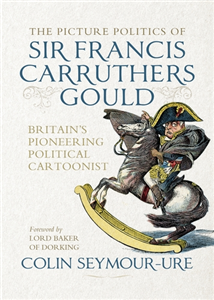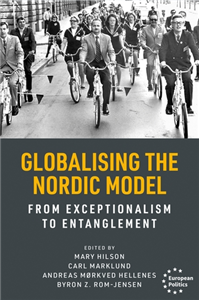Your Search Results
-
ZNN Network Literary and Illustrator Agency
- International Copyright, Licensing, and Literary Agency - International Illustrator Agency and Management Services - Creative Content Development Services
View Rights Portal
-
Promoted ContentHumanities & Social SciencesJuly 1997
The new woman
by Sally Ledger
Sexually transgressive, politically astute and determined to claim educational and employment rights equal to those enjoyed by men, the new woman took centre stage in the cultural landscape of late-Victorian Britain. By comparing the fictional representations with the lived experience of the new woman, Ledger's book makes a major contribution to an understanding of the 'woman question' at the fin de siecle. She alights on such disparate figures as Eleanor Marx, Gertrude Dix, Dracula, Oscar Wilde, Olive Schreiner and Radclyffe Hall. Focusing mainly on the last two decades of the nineteenth century, the book's later chapters project forward into the twentieth century, considering the relationship between new woman fiction and early modernism as well as the socio-sexual inheritance of the 'second generation' new woman writers. ;
-
Promoted Content
-
 Trusted Partner
January 2018
Trusted Partner
January 2018Tom Sawyers Abenteuer
Kinderbuchklassiker zum Vorlesen:
by Twain, Mark; Leger, Elke
Tom Sawyer hat den Kopf voller abenteuerlicher Ideen: Gemeinsam mit seinen Freunden Huckleberry Finn und Joe Harper geht er unter die Piraten und auf Schatzsuche. Eines Tages verirrt er sich mit seiner Freundin Becky in einer Höhle. Doch Tom gibt nicht auf, und ganz nebenbei fängt er auch noch einen gemeinen Verbrecher. Ein Klassiker der Weltliteratur - für Kinder neu erzählt und liebevoll illustriert.
-
 Trusted Partner
Trusted Partner
-
 Trusted Partner
1981
Trusted Partner
1981Unsere Kinder - unser Leben
Ein Handbuch von Eltern für Eltern
by The Boston Women's Health Book Collective
-
 Trusted Partner
1988
Trusted Partner
1988Unser Körper - Unser Leben
The New Our Bodies, Ourselves. Ein Handbuch von Frauen für Frauen
by The Boston Women's Health Book Collective
-
 Trusted Partner
June 2016
Trusted Partner
June 2016Till Eulenspiegel
Kinderbuchklassiker zum Vorlesen
by Leger, Elke / Illustriert von Hansen, Christiane
-
 Trusted Partner
Trusted Partner
-
 Trusted Partner
January 2009
Trusted Partner
January 2009Tom Sawyers Abenteuer
Kinderbuchklassiker zum Vorlesen
by Twain, Mark / Illustriert von Zöller, Markus; Deutsch Leger, Elke
-
 Trusted Partner
June 2007
Trusted Partner
June 2007Gullivers Reisen
Kinderbuchklassiker zum Vorlesen
by Swift, Jonathan / Illustriert von Zöller, Markus; Adaptiert von Leger, Elke
-
 Trusted Partner
Trusted Partner
-
 Trusted Partner
Trusted Partner
Evening Edged in Gold
A Fairytalef Arse 55 Scenes from the Countryside for Patrons of Err(o)ata
by Schmidt, Arno / Übersetzt von Woods, John E; Übersetzt von Hellen, A; Übersetzt von Book, Kurt W
-
Technology, Engineering & AgricultureMarch 1905
The First Book of Farming
by Charles L. Goodrich
This book is a result of the author's search for these facts and truths as a student and farmer and his endeavor as a teacher to present them in a simple manner to others. The object in presenting the book to the general public is the hope that it may be of assistance to farmers, students and teachers, in their search for the fundamental truths and principles of farming.
-
Humanities & Social SciencesNovember 1904
Common Sense
Addressed to The Inhabitants of America
by Thomas Paine
Published anonymously in 1776, six months before the Declaration of Independence, Thomas Paine’s Common Sense was a radical and impassioned call for America to free itself from British rule and set up an independent republican government. Savagely attacking hereditary kingship and aristocratic institutions, Paine urged a new beginning for his adopted country in which personal freedom and social equality would be upheld and economic and cultural progress encouraged.
-
 Trusted Partner
The ArtsJune 2026
Trusted Partner
The ArtsJune 2026The picture politics of Sir Francis Carruthers Gould
Britain's pioneering political cartoonist
by Colin Seymour-Ure, Mark Bryant
This is the first major study of Britain's pioneering graphic satirist, Sir Francis Carruthers Gould (1844-1925), the first staff political cartoonist on a daily newspaper in Britain, and the first of his kind to be knighted. Written by the distinguished media historian, Colin Seymour-Ure, it is essential reading for anyone interested in cartoons, caricature and illustration and will also be welcomed by students of history, politics and the media. It examines Gould's career in Fleet Street until his retirement after the First World War. It also discusses his illustrations for magazines and books and there is an analysis of his use of symbolism and literary allusion to lampoon such eminent politicians as Gladstone and Joseph Chamberlain. As Lord Baker says in his Foreword, this book is 'a major contribution to our knowledge of British cartooning.'
-
 Trusted Partner
The ArtsDecember 2024
Trusted Partner
The ArtsDecember 2024The picture politics of Sir Francis Carruthers Gould
Britain's pioneering political cartoonist
by Mark Bryant
This is the first major study of Britain's pioneering graphic satirist, Sir Francis Carruthers Gould (1844-1925), the first staff political cartoonist on a daily newspaper in Britain, and the first of his kind to be knighted. Written by the distinguished media historian, Colin Seymour-Ure, it is essential reading for anyone interested in cartoons, caricature and illustration and will also be welcomed by students of history, politics and the media. It examines Gould's career in Fleet Street until his retirement after the First World War. It also discusses his illustrations for magazines and books and there is an analysis of his use of symbolism and literary allusion to lampoon such eminent politicians as Gladstone and Joseph Chamberlain. As Lord Baker says in his Foreword, this book is 'a major contribution to our knowledge of British cartooning.'
-
September 1904
Hamlet
by William Shakespeare
Hamlet is Shakespeare's longest play, and is considered among the most powerful and influential works of world literature, with a story capable of "seemingly endless retelling and adaptation by others". The play likely was one of Shakespeare's most popular works during his lifetime, and still ranks among his most performed, topping the performance list of the Royal Shakespeare Company and its predecessors in Stratford-upon-Avon since 1879. It has inspired many other writers—from Johann Wolfgang von Goethe and Charles Dickens to James Joyce and Iris Murdoch—and has been described as "the world's most filmed story after Cinderella"
-
 Trusted Partner
Trusted Partner
-
Business, Economics & LawMarch 1905
The Path of the Law
by Oliver Wendell Holmes Jr.
In The Path of the Law, Holmes discusses his personal philosophy on legal practice. The Common Law is a series of lectures that established Holmes's reputation as a witty and articulate writer.
-
 Trusted Partner
Humanities & Social SciencesMarch 2026
Trusted Partner
Humanities & Social SciencesMarch 2026Globalising the Nordic Model
From exceptionalism to entanglement
by Mary Hilson
The five Nordic countries - Denmark, Finland, Iceland, Norway and Sweden - frequently attract attention as examples of a 'Nordic model'. The meanings of the term vary, but especially since the global financial crisis of 2008-9 the Nordic countries have often been portrayed positively, as examples of economic dynamism, innovation and social equality. Studies of these images of the Nordic countries and Nordic region and their international circulations are now a well-established field of research. This volume explores how the Nordic model has been shaped by global entanglements, in exchange not only with Western Europe and North America, but also with the Global South. Drawing on selected case studies, the volume offers new perspectives on the meanings of the Nordic model and Nordic exceptionalism in a global context during the half century since c. 1970.





























